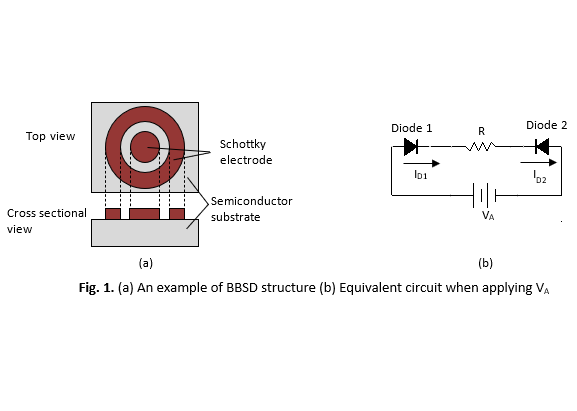Modelling and Analysis of Inhomogeneous Back-to-Back Schottky Junction Diode
DOI:
https://doi.org/10.37934/araset.51.2.206214Keywords:
Schottky junction, inhomogeneous barrier, back-to-back diode, thermionic transport, current spreadingAbstract
Back-to-back Schottky diode (BBSD) is a simple device structure made from Schottky junctions that can be applied in various applications. In modelling and simulating the BBSD, the inhomogeneity of the barrier height at the Schottky interface should be considered. This paper presents device models and simulation result of an inhomogeneous BBSD. Two device models with different current spreading condition are considered. The distribution of the inhomogeneous barrier height is represented by Gaussian distribution. All the computation was done using Python programming software. When the standard deviation of the barrier height increases, the apparent barrier height that influence the electrical characteristic decreased. This is consistent with the reported experimental data. Device model that considers full current spreading showed 37.8% reduction of apparent barrier height at standard deviation of 100 meV. This is greater that the model with no current spreading. The ideality factor showed correlation with the standard deviation of barrier height, particularly when no current spreading is considered. At standard deviation of 100 meV, the ideality factor increased 2.6 %. The obtained non-unity ideality factor is associated to the significant fluctuation in the barrier height. The computed temperature-dependent current curves also showed good agreement with the reported experimental results. The device model can be a convenient tool to investigate the device operation and to validate the method used for extraction of Schottky barrier parameters.
Downloads




























